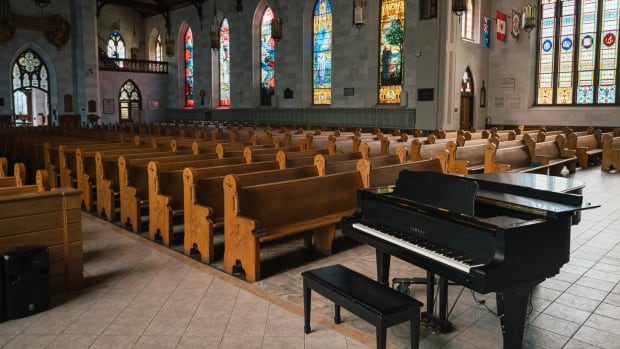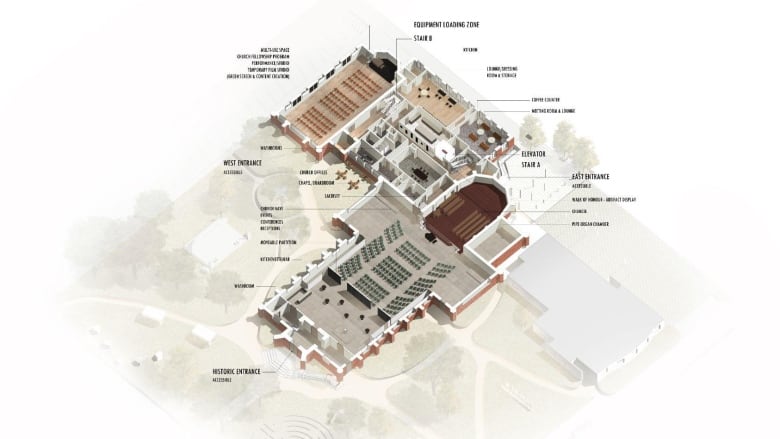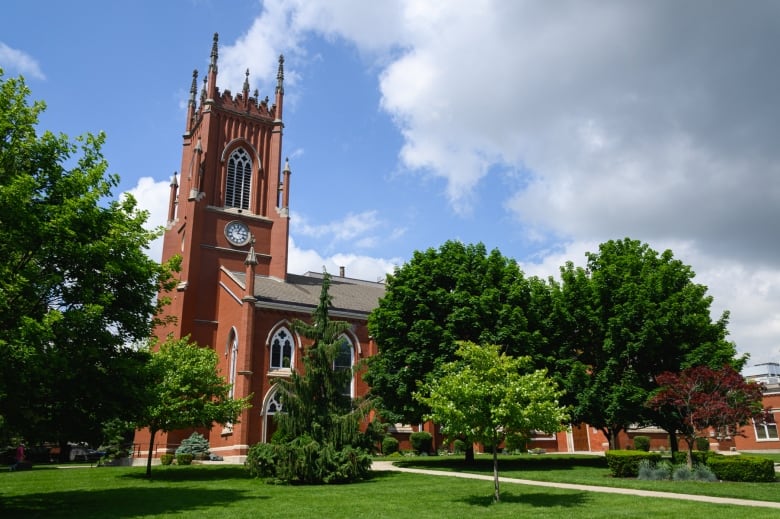
Performing arts venue, recording studio, and content creation space are among the uses being floated as part of a multi-year plan to map out the future of St. Paul’s Cathedral.
It comes as the Anglican Diocese of Huron looks to reinvent its spaces of worship amid lower religious attendance, and chart a path forward for the city’s oldest cathedral as part church, part incubator for London’s creative sector.
“There was a day when this was the very heart of the city. It was a place where all kinds of things happened. As has happened with a lot of mainline churches over the years, that has certainly slid away,” said Rev. Canon Kevin George, the cathedral’s dean.
“We want to be relevant. We want to be engaged. We want to be building relationships, and we want to be giving to the city of London.”
CBC London first reported on the idea in November, but more information and new renderings have emerged in a business plan going before a city council committee on Tuesday, prepared by the group involved in the transformation.
St. Paul’s was built between 1844 and 1846 and is the oldest church in London.
The Montreal-based non-profit Trinity Centres Foundation (TFC) is known for its work turning underutilized church properties into community hubs and affordable housing.
In November, city council voted to have TFC develop a business plan in partnership with the diocese and cathedral.
The foundation is looking for the city to partner with the project to help expedite permits or zoning approvals necessary, and to help with grants.

The business plan proposes utilizing roughly 9,000 ft of church space for a creative sector incubation hub, with boardrooms, workshop spaces, private studios, practice and recording areas, lounges and more.
The plan would also see the cathedral’s nave and narthex, the gathering space in front of the nave, converted into a 700-seat multi-use space for church services and other events, including conferences and performances – a plan which necessitates removing fixed pews and other upgrades.
George said the change would allow the congregation to reorganize how they gather for service, which currently sees fewer than 100 people on Sundays. Opening up the space would also help turn the cathedral into a destination, and could help boost congregation numbers.
“There’s a lot of perception about what the church is out there that doesn’t match up with reality. We’re open, we’re inviting, we’re inclusive,” he said.
The project also outlines outdoor improvements and a housing component, including a plan announced last month to turn an empty diocese-owned office building into affordable housing.
Another diocese-owned office building at 200 Queens Ave., partially empty, could also potentially become housing, the plan says. The building is leased to Sifton Properties until 2030.
Kendra Fry, project lead with TCF, said the three-phase plan would be spread out over several years, with partnerships established this summer. Initial partners would move into the space in the fall, she said.
“In the spirit of a creative hub, we start experimenting, and we discover the best usage pattern, who really wants to be here, and how do they make the best use of the spaces that are available,” she said.

Phase two, pegged over the next two years, would see roughly $2.5 million in infrastructure and technology upgrades, while phase three, rolling out six years from now, will see $6 to 8 million in permanent upgrades, including new bathrooms and an elevator.
George said there was some initial fear and unease among congregants about the changes planned, but he adds they’re aware the church has to think differently to survive.
“On the whole, people in this place understand that the leadership here has the best interest of the community at heart, and that we’re doing this for the betterment of building up the Kingdom of God here on Earth, which is an open, inviting, welcoming community.”